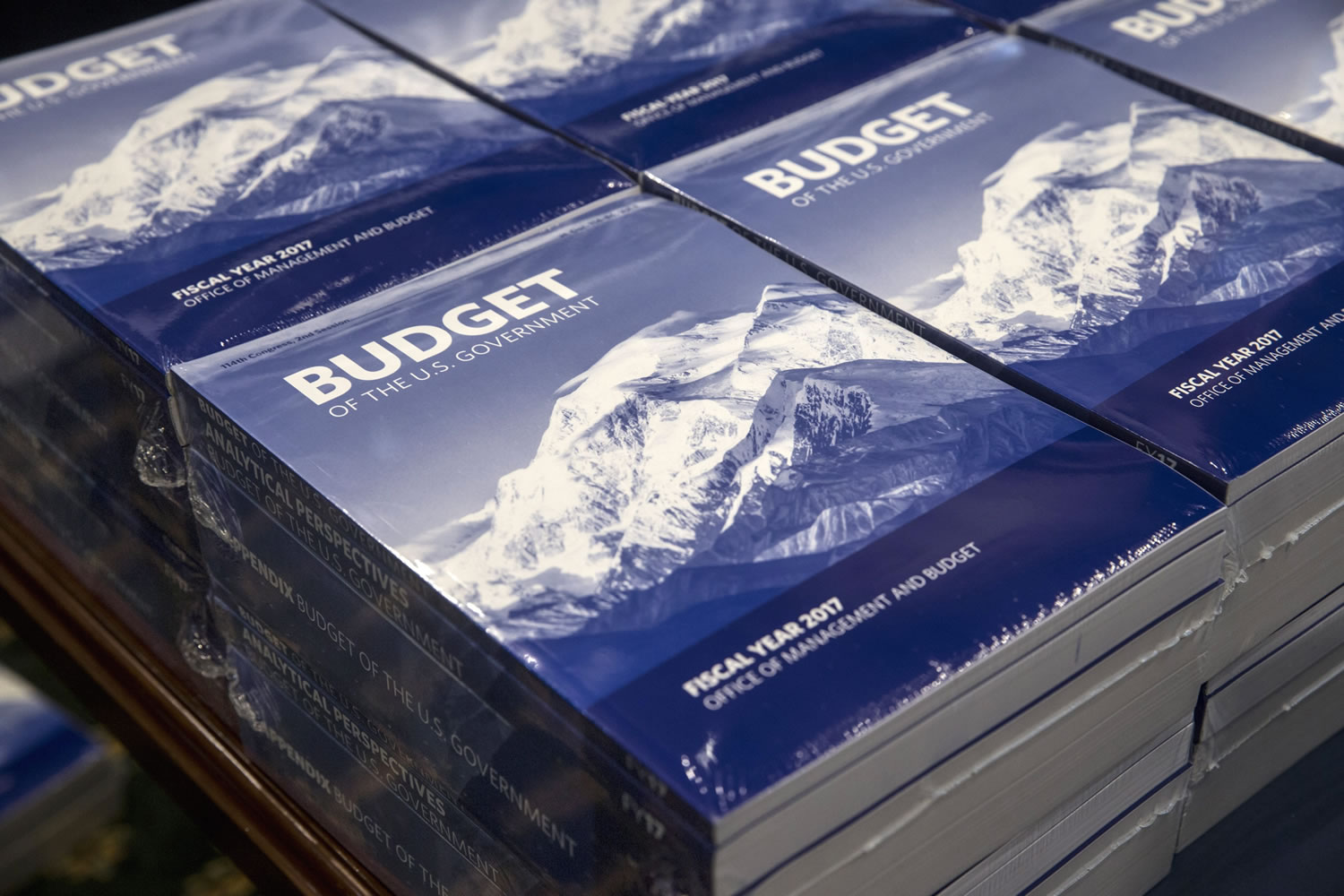WASHINGTON — The final proposed budget of the Obama presidency seeks more taxes on the wealthy, a push to solve the riddle of cancer, a modest slowing of debt and deficits, more spending to defeat Islamic extremists and a renewed focus on cybersecurity.
The $4.1 trillion spending plan for the 2017 fiscal year, which begins Oct.1, was met Tuesday with stiff opposition. Republican chairmen of the House of Representatives and Senate budget committees didn’t invite White House budget chief Shaun Donovan to present it, the first time that has happened since modern budgeting began in the mid-1970s.
House Speaker Paul Ryan, R-Wis., dismissed President Barack Obama’s final budget proposal as “a progressive manual for growing the federal government at the expense of hardworking Americans.”
Overall spending levels were set in a two-year budget deal last year, so Obama used the opening pages of his final budget to take a victory lap.
“When I took office, our nation was in the midst of the worst recession since the Great Depression. The economy was shedding 800,000 jobs a month,” he wrote by way of reminder, adding that today “our economy is the strongest, most durable on Earth.”
Here are three important takeaways from the final Obama spending blueprint.
• The budget is a political tool: Congress enjoys the power of the purse, so presidential budgets necessarily are about political vision, where the country is and where it should be. This budget is no different, except that it comes amid tight presidential primary races in both parties and on the day of pivotal voting in the bellwether state of New Hampshire.
Obama’s budget has much in common with the views of Vermont independent Sen. Bernie Sanders and former Secretary of State Hillary Clinton, including a fee on the largest banks and financial institutions. The fee would apply to most companies in banking and finance if they have more than $50 billion in assets.
In line with Democratic campaign rhetoric, the budget would force the wealthiest Americans to pay more in taxes, closing loopholes and raising $955 billion in revenue over 10 years. Obama’s budget also helps the poor with anti-poverty programs, helps the middle class with expanded tax credits, and supports cities such as Flint, Mich., suffering from dangerous amounts of lead in local tap water.
As part of a recently announced “moonshot” to combat cancer, Obama calls for $755 million in new multiyear spending on prevention, diagnosis and treatment.
Conservatives were quick to label Obama’s budget an election-year manifesto. Heritage Action, the political arm of the Heritage Foundation research center, called the president’s budget “an impressive display of political messaging.”
• Focus on security challenges: Obama’s final budget seeks funding to address several flash points that have dogged his presidency. These include more funding to combat Islamic extremists, programs to push back on Russian leader Vladimir Putin’s bullying of neighbors and $19 billion in new cybersecurity funding after several embarrassing hacks into U.S. government computers.
State Department officials seek to reassure nervous U.S. allies in Europe and along its borders via a $953 million request bluntly earmarked for “countering Russian aggression.” The funding is destined mostly for Ukraine, Georgia and Moldova, but it also supports Central Asia.
To fight Islamic extremists, the White House would give $7.5 billion to the Defense Department to continue military action to remove such fighters from Iraq and Syria. It would provide $4 billion for building capable local ground forces and humanitarian assistance in those countries. And the White House would spend $4 million on research to better understand how to prevent violent extremism from budding and $11 million on local efforts to prevent extremism from taking root.
• Sleight of hand on debt and deficits: The administration budget proposal boasts that if it’s passed — a highly unlikely occurrence — the federal deficit would hold steady for the next decade. It would hover around a number that amounts to about 3 percent of the size of the overall economy.
But deficits are just one part of the fiscal equation. The other is swelling debt. Officials noted that by 2026 their spending plan, when compared with the status quo, would bring down debt held by the public to about 75.3 percent of the overall economy, compared with 87.6 percent if nothing changes.
Briefing reporters, budget chief Donovan called the debt improvement “a key measure of fiscal progress.”
It’s a dangerous bragging point. For the last decade, debt as a percentage of the economy has been running at more than twice the nation’s historical average of about 35 percent. If the U.S. faces another potential financial meltdown like that in 2008, there would be limited room to respond with big government programs that explode the debt.
Persistently high debt would lead investors to demand higher rates of return to buy U.S. government bonds, making the debt scenario even worse. Think Greece just a few years ago.



